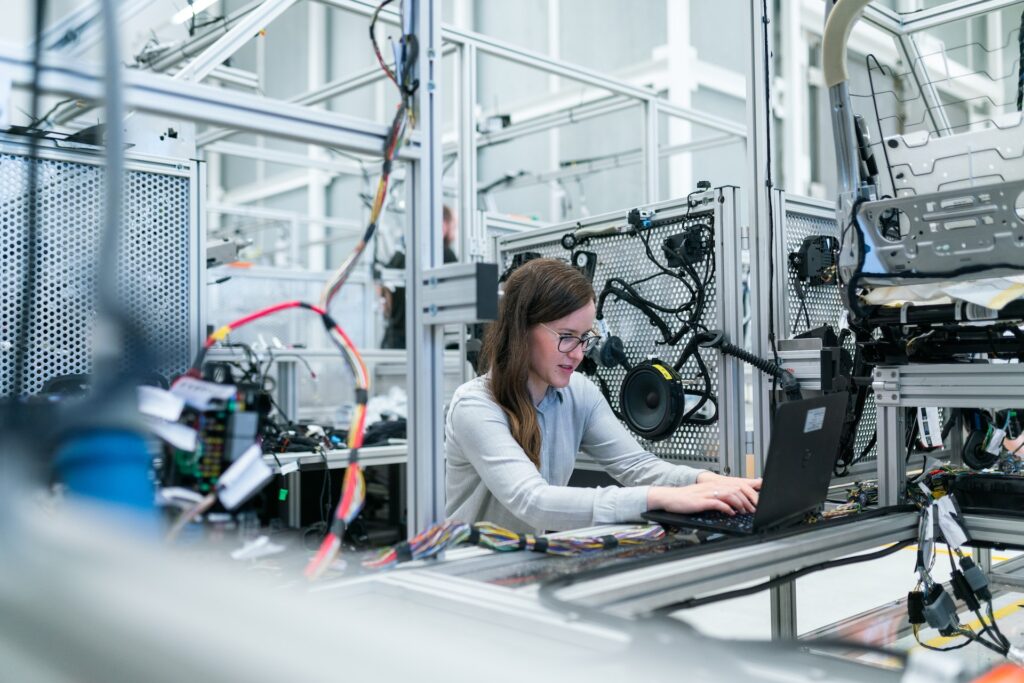Technology has become an integral part of our daily lives, making our work and daily routines more convenient and efficient. However, as technology continues to advance, there is growing concern about its impact on the environment.
Technology is a term that has been used for a long time, but defining it could be quite tricky. For some, technology refers to the machines and gadgets that surround us, while for others, it is the complex systems and processes that utilize these machines and gadgets. Regardless of how technology is defined, it is apparent that technology is intricately linked to our environment.
In this blog post, we will take a closer look at technology??s impact on the environment, including its positive and negative impacts.
What is technology?
Technology refers to the skills, tools, and methods that humans use to create, develop, and share knowledge.
The term “technology” has been used since ancient times and has evolved to encompass almost everything we use daily. Technology encompasses all of these, from simple hand tools like knives and spears to complex machinery like airplanes and rockets.
How does technology impact the environment?
The impact of technology on the environment can be vast and varied. The same machines and gadgets that have made our lives easier and more comfortable have also significantly impacted the environment.
While technology has helped many people enjoy a better quality of life, it has also contributed to some of the most significant environmental problems we face today.

Positive impacts of technology on the environment
- Increased efficiency and productivity. Technology can help us to use resources more efficiently, reducing pollution and waste. For example, energy-efficient appliances can help us to save on our energy bills, and more efficient transportation systems can reduce traffic congestion and air pollution.
- Improved waste management. Technology can help us to better manage our waste, from recycling and composting to reducing the amount of packaging used in products. This can reduce the amount of pollution created by waste and help us protect our environment.
- Reduced emissions. Innovations such as electric vehicles and renewable energy sources have helped to reduce air pollution and emissions. This has had an enormous impact on the environment, helping to reduce the effects of climate change.
- Improved monitoring and management of the environment. Technology can be used to monitor the environment and track changes over time. This information can help us manage the environment more effectively and prevent or mitigate environmental problems. For example, satellites can be used to track deforestation, and sensors can be used to monitor air quality.
- Development of new environmental technologies. Technology can be used to develop new ways to clean up pollution, conserve resources, and protect the environment. Innovative technologies such as renewable energy, electric vehicles, and smart grids can help to reduce greenhouse gas emissions and combat climate change.
Negative impacts of technology on the environment
- Resource depletion. The production and disposal of technology require significant resources such as energy, materials, and water. This can lead to resource depletion and the generation of waste.
- Pollution. The production and use of technology can lead to pollution, such as air pollution, water pollution, and noise pollution. This pollution can have a negative impact on human health and the environment.
- Waste generation. As technology advances and becomes more disposable, e-waste is becoming a significant problem. E-waste is a term used to describe discarded electronic devices such as smartphones, laptops, and tablets. Improperly disposed of e-waste can release toxic chemicals such as lead, mercury, and cadmium into the environment.
How Can We Mitigate the Negative Impacts of Technology on the Environment?
While the negative impacts of technology on the environment are significant, there are many things we can do as individuals and society to mitigate these effects:
One of the simplest ways to reduce the impact of technology on the environment is by reducing the amount of new technology we purchase. Instead of buying new, consider buying used or refurbished electronics. Be sure to recycle old electronics properly to prevent harmful substances from polluting the environment.

Opt for energy-efficient appliances and devices. These consume less energy and reduce your carbon footprint and overall energy costs.
Support and invest in businesses that prioritize sustainable technology. This includes companies that are developing renewable energy sources or creating products with minimal impact on the environment.
Dispose of electronic waste (e-waste) responsibly. Many cities and towns have e-waste recycling programs. These programs ensure that electronic devices are disposed of in a way that is safe for the environment. And, if you upgrade frequently, consider reselling your used tech for cash–this is the easiest way to reduce your environmental impact.
You can also embrace digital minimalism by limiting the number of digital devices you own and use. This simple adjustment to your daily routine reduces the amount of generated e-waste and limits the energy consumed by these gadgets.
However, while technology poses certain environmental challenges, we can significantly reduce our ecological footprint and contribute to a more sustainable future with mindful and sustainable practices.
Conclusion
In conclusion, technology has both positive and negative impacts on our environment. While it has the potential to help us conserve resources and protect the Earth, it can also lead to resource depletion and environmental pollution.
As technology continues to advance, it is up to us to ensure that we are using technology responsibly and that we are taking steps to mitigate its negative impacts on the environment. By being mindful of our technological footprint, we can help to create a more sustainable future for our planet.










